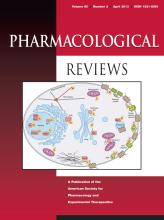Abstract
Gβγ subunits from heterotrimeric G proteins perform a vast array of functions in cells with respect to signaling, often independently as well as in concert with Gα subunits. However, the eponymous term “Gβγ” does not do justice to the fact that 5 Gβ and 12 Gγ isoforms have evolved in mammals to serve much broader roles beyond their canonical roles in cellular signaling. We explore the phylogenetic diversity of Gβγ subunits with a view toward understanding these expanded roles in different cellular organelles. We suggest that the particular content of distinct Gβγ subunits regulates cellular activity, and that the granularity of individual Gβ and Gγ action is only beginning to be understood. Given the therapeutic potential of targeting Gβγ action, this larger view serves as a prelude to more specific development of drugs aimed at individual isoforms.
Footnotes
This work was supported by grants from the Canadian Institutes of Health Research (CIHR; MOP-79354 to T.E.H.). T.E.H. holds a Chercheur National Award from the Fonds de la Recherche en Santé du Québec. G.J.M. holds a New Investigator Award from the CIHR. R.S., S.M.K., and P.Z. hold scholarships and S.G. holds a postdoctoral fellowship from the McGill-CIHR Drug Development Training Program. Institut de Recherche en Immunologie et en Cancélogie is supported in part by the Canadian Center of Excellence in Commercialization and Research, the Canada Foundation for Innovation, and the Fonds de la recherche en santé du Québec.
- Copyright © 2013 by The American Society for Pharmacology and Experimental Therapeutics
PharmRev articles become freely available 12 months after publication, and remain freely available for 5 years.Non-open access articles that fall outside this five year window are available only to institutional subscribers and current ASPET members, or through the article purchase feature at the bottom of the page.
|






